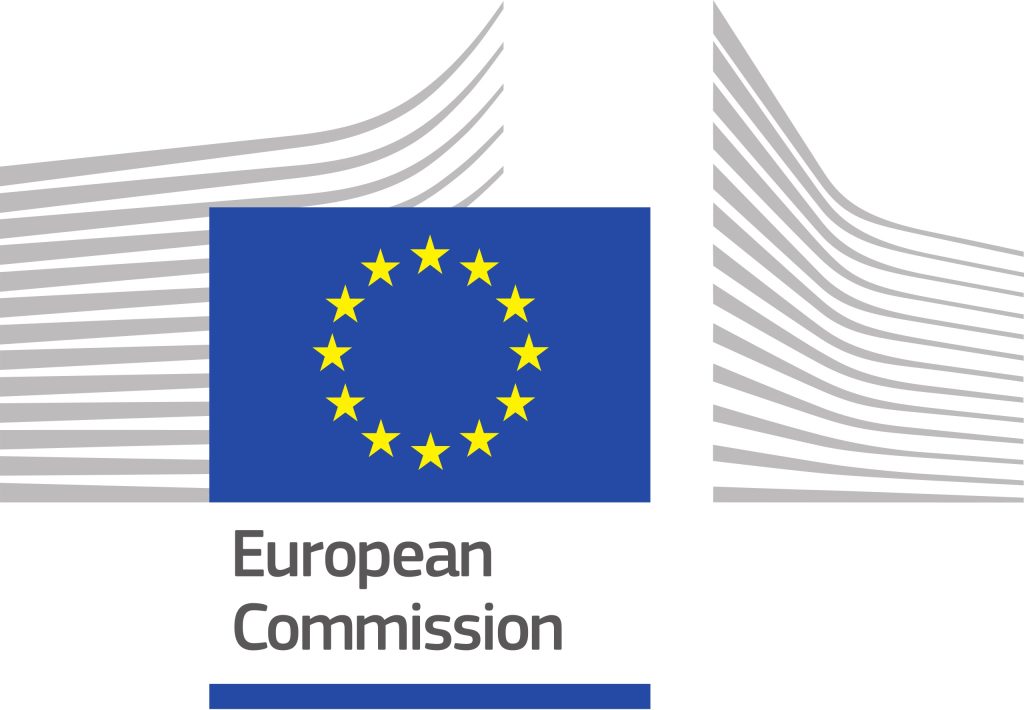
Balance of plant components, architectures and operation strategies for improved PEMFC system efficiency and lifetime
Expected Outcome:
To achieve the ambitious goal of the European Green Deal (at least 90% reduction in transport emissions by 2050 to be consistent with climate neutrality), reducing CO2 emissions attributed to transport (around 30% of EU total) is a key, particularly when taking into account the constant expansion of high-power means of transportation on road, by rail, air and water. Improvements on fuel cells technology building blocks applicable across a range of different applications will contribute by tackling basic issues related to efficiency and lifetime which are currently preventing competitive deployment of hydrogen-based transport. The motivation of this topic is to achieve the overall improvement of the PEMFC[1]-based systems by addressing the Balance of Plant (BoP) as the remaining system technology building block, thereby ensuring successful implementation of outcomes from R&I actions currently dedicated to improving fuel cells technology for transport by addressing components from core materials to stack level, in parallel to hydrogen storage on-board.
Project results are expected to contribute to all of the following expected outcomes:
- Solutions for improving efficiency and durability of the PEMFC system (at least 100 kW, as aimed for Heavy-duty (HD) road application), applicable for integration / implementation in a prototype for at least one HD transport mean by 2030;
- PEMFC systems integrating new optimised architecture or new hybridisation strategies ready to be adopted and implemented by developers of powertrains for heavy-duty high-power means of transport;
- New modular BoP elements based on appropriate combination of components / devices / strategies addressing fuel or air supply (and cooling) and fulfilling expectations of fuel cell powertrains suppliers and end-users;
- Flexible tools for adapting/optimising PEMFC BoP operation strategies to improve reliability and durability of wide range of Fuel Cell Hydrogen-based means of transport;
- Support the development of the PEMFC technology for cost competitive next generation of commercial/industrial scale FC systems from EU suppliers of primarily heavy-duty vehicles and potentially other applications;
- Consolidate European leadership on understanding and optimisation of BoP architectures for specific technology cases addressing all transport applications, including support to developments conducted in topic “HORIZON-JTI-CLEANH2-2024-03-02: Scaling-up Balance of Plant components for efficient high power heavy duty applications” and other BoP topic dedicated to new solutions specifically adapted for new generation higher-power applications.
Project results are expected to contribute to the following objectives and KPIs of the Clean Hydrogen JU SRIA:
- Proving efficiency and applicability of Hydrogen Fuel Cell based solutions in the transport sector thanks to necessary improvements gained at system level, with validation of the new solutions on at least one module (defined by the project StaSHH as the stack plus the BoP) for a heavy-duty-road case and demonstrated applicability for another case from a different transport mode;
- Improved building blocks for heavy-duty applications, with higher power density, efficiency, reliability and durability, thanks to better performing BoPs, with redesigned architectures and optimised strategies, integrating at least one newly developed BoP component (or sub-system);
- Objectives and KPIs are targeted at module or system scale with improvements in design or health monitoring: they should be validated on the leading selected heavy-duty-road application, then highlighting spillover benefits for other applications;
- FC module CAPEX <300 €/kW;
- FC module durability > 25,000 h. End of life is corresponding to 10% loss in performance;
- FC system electric efficiency of 60% with state of art PEMFC stack achieving SRIA KPIs in terms of initial performance (areal power density between 1 and 1.2 W/cm² @ 0.675V).
Scope:
Heavy duty high-power transport applications put stringent lifetime expectations for the entire Fuel Cell System (FCS). The FCS should achieve the same lifetime expectations as the Fuel Cell stack if not longer. Balance of plant (BoP) components (such as devices to improve air, fuel and cooling subsystems, like particularly innovative air compressor/turbocharger, air humidifier, hydrogen recirculation features, and devices to support control, monitoring or safety, like high-voltage components, electronic converters, sensors...) and stack/system interactions management (diagnostic strategies, algorithms, methodologies) also require focused innovation and development. Even if stack design and core components have the most significant impact on the PEMFC performance and durability, optimising PEMFC system operation strategies and architectures is essential to achieve the targets expected for 2030 allowing efficient FC systems integration into transport means.
The link between performance losses and degradation mechanisms occurring in stacks is extensively investigated, as are the operational situations that promote them. Mitigation strategies and novel architectures can be proposed on system and BoP level but breakthrough efforts are needed to assess and moreover quantify their benefit. The eventual optimisation will allow for stability improvement towards all the specified usage modes and conditions (idle, high and low power, load cycles, cold start, start-up, shunt down, reactants, cooling).
This topic focuses on:
- developments to ensure improved system performance combined with its extended lifetime by addressing BoP components, including new developments on BoP sub-systems, and module/system interactions with respect to efficiency, reliability, durability and cost. The improvement is expected from a combined approach addressing the architecture and operation strategies of a system both supported by the development or redesign of at least one BoP component preventing optimized efficiency at beginning of life and over the long term. Moreover, primary focus will be on heavy-duty road applications, within the boundaries of STaSHH definitions for the actual validation of results, even though spillover benefits in other transport modes shall be highlighted.
- 100 to 220 kW modules, the range identified by the StaSHH project for the heavy-duty-on-road cases, which is identified as the leading field of application to be considered here. Scalability by implementing several modules towards very large power when needed as well as spillover effects of new BoP solutions to other transport modes will be considered in the further exploitation of results, as additional outputs.
R&I activities to be addressed should consistently include the following to achieve the expected results:
- Understanding and assessment of irreversible and reversible degradations attributed to system operation conditions specified for the targeted application, following a coupled experimental / modelling approach (e.g., analysing and quantifying issues associated with the different usage modes, specific situations or conditions, transients);
- Development of solutions to mitigate irreversible and regenerate reversible degradation by acting on the PEMFC system strategies or redesigning BoP architectures. This could include identifying requirements for BoP-components to perform robust start-up, shut-down in nominal or extreme conditions, and plans for demonstration of identified solutions;
- Pursue BoP behaviour analysis and diagnostics for appropriate BoP and system state of health monitoring, (development of specific measuring tools, procedures, real and virtual sensors, algorithms, and prognostic based methodology; as well as digital twin approach could be considered for effective control over the long-term);
- Identifying within the BoP architecture, individual or combined elements affecting the performance likely to reduce reliability and durability. This could include issues related to materials used (for example risk of emissions causing contamination) or functional requirements (for example dynamics);
- Carrying out required development and optimisation of identified less robust BoP component(s) (ground-up redesign of at least one component or one sub-system);
- Developing solutions for optimised assembly of the selected items, also linking the approach with the best suited sub-system or system management (on this item modular multi scale architectures could be a viable approach);
- Assessing BoP components (or subsystems) managing the fuel or the air supply: feeding sources and modes (compression, circulation, purges etc) and operating conditions profiles (like pressure, flow, relative humidity) along with the devices used to control them, could be particularly relevant for improving performance stability at module management scale;
- Validation of improvement (at system/module or BoP component level) of the overall system reliability and serviceability thanks to optimised Fuel Cell System management
- Assessing manufacturability aspects for the ground-up redesigned BoP components to meet system cost targets (techno-economic assessment regarding impact on BoP improvements and manufacturing of the newly developed components).
- Carrying out a techno-economic assessment to demonstrate the progress toward reducing the CAPEX of fuel cells, associated to the work in BoP development, including manufacturing aspects regarding newly developed BoP components;
The final aim of the topic is to demonstrate efficiency and durability improvements for selected specifications, at representative scale in a real or emulated system environment.
The validation of performance improvement should be done on one real module for at least one case of heavy-duty road application, against a reference described in the proposal and presenting at least 2022 state of the art performance.
In addition, the modularity or adaptability of the solutions developed should be proven based on a feasibility study considering another power level or another heavy-duty transport mode.
Referring to StaSHH outcomes in terms of integration boundaries, developed solutions should be implementable in harmonised PEMFC modules for systems of power level of at least 100 kW (range of StaSHH standards 110 to 220kW identified for heavy-duty-road modules) and operated, for their validation, in representative conditions according to the road transport applications selected.
Proposals should include a description on how KPIs will be assessed and reached, by justifying assessment and validation procedures regarding the applications targeted.
Consortia are expected to build on the expertise from the European research and industrial community to ensure impact by addressing several of the aforementioned items. End-users should be involved, at least in an advisory board, while at least one Fuel Cell manufacturer should be included in the consortium.
Proposals should demonstrate its ability to address appropriately different heavy-duty transport means. In particular, it should be demonstrated how spill over effects in other transport modes, besides heavy-duty-on-road, will be achieved in terms of exploitation of results.. At least one partner should be involved focusing on the development of a new BoP component or sub-system.
The developments on the FC stack or stack components are not in the scope of this topic.
HORIZON-JTI-CLEANH2-2024-03-01 and HORIZON-JTI-CLEANH2-2024-03-02 topics are highly complementary; liaison between successful proposals in these two topics is expected to ensure complementarity, leverage synergies and avoid duplication of efforts. Applicants should demonstrate how this will be achieved (e.g. by sharing members of the respective advisory boards, by organizing regular exchanges).
Proposals are encouraged to explore synergies with the Zero Emission Waterborne Transport (ZEWT) Partnership and 2ZERO Partnership as the outputs of the projects supported under this topics should be of direct interest to companies in the road and port-maritime sector (e.g. trucks, pilot boats, cargo port handling equipment, etc).
For additional elements applicable to all topics please refer to section 2.2.3.2.
Activities are expected to start at TRL 3 and achieve TRL 5 by the end of the project - see General Annex B.
The JU estimates that an EU contribution of maximum EUR 4.00 million would allow these outcomes to be addressed appropriately.
The conditions related to this topic are provided in the chapter 2.2.3.2 of the Clean Hydrogen JU 2023 Annual Work Plan and in the General Annexes to the Horizon Europe Work Programme 2023–2024 which apply mutatis mutandis.
Specific Topic Conditions:
Activities are expected to start at TRL 3 and achieve TRL 5 by the end of the project - See General Annex B.
[1]PEMFC: proton exchange membrane fuel cell
General Information
To achieve the ambitious goal of the European Green Deal (at least 90% reduction in transport emissions by 2050 to be consistent with climate neutrality), reducing CO2 emissions attributed to transport (around 30% of EU total) is a key, particularly when taking into account the constant expansion of high-power means of transportation on road, by rail, air and water. Improvements on fuel cells technology building blocks applicable across a range of different applications will contribute by tackling basic issues related to efficiency and lifetime which are currently preventing competitive deployment of hydrogen-based transport. The motivation of this topic is to achieve the overall improvement of the PEMFC[1]-based systems by addressing the Balance of Plant (BoP) as the remaining system technology building block, thereby ensuring successful implementation of outcomes from R&I actions currently dedicated to improving fuel cells technology for transport by addressing components from core materials to stack level, in parallel to hydrogen storage on-board.
Project results are expected to contribute to all of the following expected outcomes:
- Solutions for improving efficiency and durability of the PEMFC system (at least 100 kW, as aimed for Heavy-duty (HD) road application), applicable for integration / implementation in a prototype for at least one HD transport mean by 2030;
- PEMFC systems integrating new optimised architecture or new hybridisation strategies ready to be adopted and implemented by developers of powertrains for heavy-duty high-power means of transport;
- New modular BoP elements based on appropriate combination of components / devices / strategies addressing fuel or air supply (and cooling) and fulfilling expectations of fuel cell powertrains suppliers and end-users;
- Flexible tools for adapting/optimising PEMFC BoP operation strategies to improve reliability and durability of wide range of Fuel Cell Hydrogen-based means of transport;
- Support the development of the PEMFC technology for cost competitive next generation of commercial/industrial scale FC systems from EU suppliers of primarily heavy-duty vehicles and potentially other applications;
- Consolidate European leadership on understanding and optimisation of BoP architectures for specific technology cases addressing all transport applications, including support to developments conducted in topic “HORIZON-JTI-CLEANH2-2024-03-02: Scaling-up Balance of Plant components for efficient high power heavy duty applications” and other BoP topic dedicated to new solutions specifically adapted for new generation higher-power applications.
Project results are expected to contribute to the following objectives and KPIs of the Clean Hydrogen JU SRIA:
- Proving efficiency and applicability of Hydrogen Fuel Cell based solutions in the transport sector thanks to necessary improvements gained at system level, with validation of the new solutions on at least one module (defined by the project StaSHH as the stack plus the BoP) for a heavy-duty-road case and demonstrated applicability for another case from a different transport mode;
- Improved building blocks for heavy-duty applications, with higher power density, efficiency, reliability and durability, thanks to better performing BoPs, with redesigned architectures and optimised strategies, integrating at least one newly developed BoP component (or sub-system);
- Objectives and KPIs are targeted at module or system scale with improvements in design or health monitoring: they should be validated on the leading selected heavy-duty-road application, then highlighting spillover benefits for other applications;
- FC module CAPEX 25,000 h. End of life is corresponding to 10% loss in performance;
- FC system electric efficiency of 60% with state of art PEMFC stack achieving SRIA KPIs in terms of initial performance (areal power density between 1 and 1.2 W/cm² @ 0.675V).






Balance of plant components, architectures and operation strategies for improved PEMFC system efficiency and lifetime 0 reviews
Login to Write Your ReviewThere are no reviews yet.